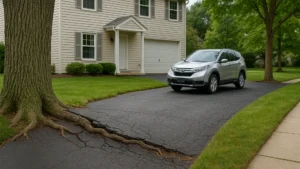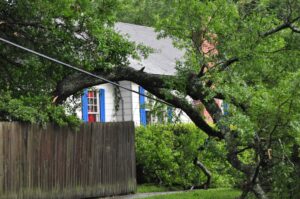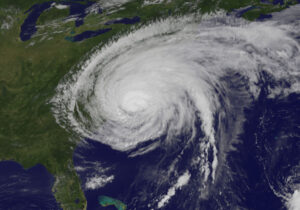In This Article ...
A terrifying night in Ridgefield
Shortly before 1:30 a.m. Thursday, powerful gusts of wind roared through Ridgefield, New Jersey, tearing limbs from trees and toppling power lines. On Bruce Street, one large tree gave way, crashing directly into an apartment building and caving in part of the roof above a family’s unit.
Inside, 18-year-old Gael Okudzeto had been asleep when the ceiling came down. His father, Rubicon Okudzeto, woke to the sound of the crash and his son shouting for help. “I was just praying, praying for a miracle,” the father told reporters through tears. “After 30 minutes, he opened the door and stepped outside and I realized God is great.”
Crews worked through the morning clearing debris as stunned residents watched from the sidewalk. Some apartments were evacuated as structural engineers assessed the damage.
Gael was briefly knocked unconscious but regained awareness and was taken to the hospital. Doctors described his survival as “a miracle.” Standing outside the damaged building hours later, Gael said, “I’m just thinking, I’m really lucky to survive this. Not everyone will be this lucky.”
Wind, timing, and luck
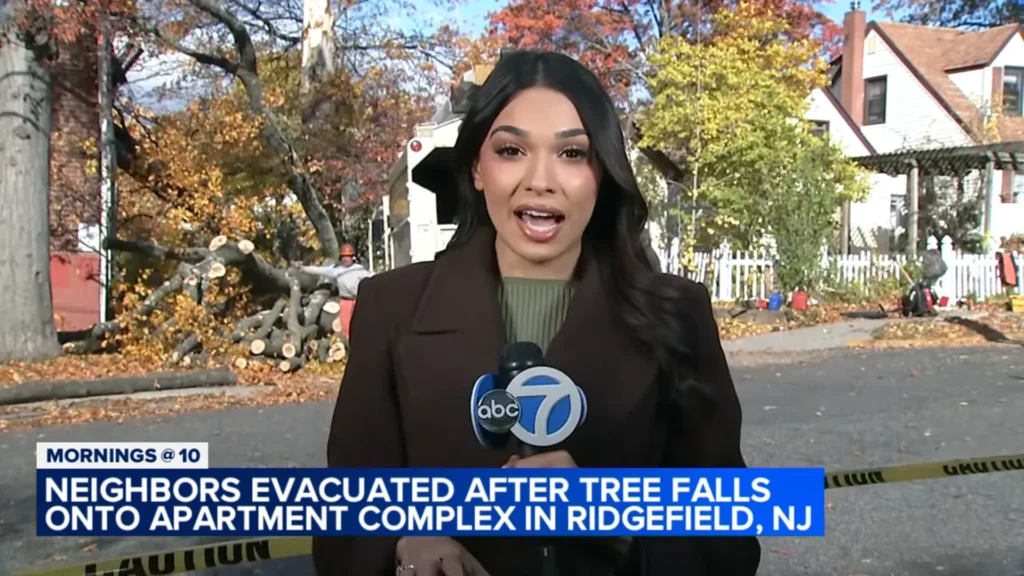
Residents described the howling overnight wind as “like something out of The Wizard of Oz.” Gusts between 40 and 45 mph swept across the region, toppling branches and knocking out power to more than 6,700 customers statewide.
The Ridgefield tree fell at the worst possible moment — overnight, when everyone was asleep. It was strong enough to crush a section of a sturdy apartment structure. If it had struck a smaller, single-family home, the results could have been devastating.
This wasn’t a freak accident. To arborists, it’s a warning sign of a larger trend. Across New Jersey, storms are getting more frequent and more violent. Saturated soil, aging trees, and neglected maintenance are combining to create conditions where healthy-looking trees can fail without warning.
Request Tree Service By Email
From precision pruning and safe removals to health assessments and preventative care, Hufnagel Tree Service delivers expert solutions backed by decades of experience. We offer certified insight, fair pricing, and a commitment to doing what’s best for your landscape.
“It could happen anywhere,” says Monmouth County arborist

Michael Hufnagel, a certified arborist serving Monmouth County for more than two decades, says the Ridgefield collapse is the kind of event that wakes people up — briefly. “Every time there’s a story like this, we get a flood of calls for a few days,” he said. “But by the next week, people forget. The problem is, the wind doesn’t forget. It keeps coming.”
According to Hufnagel, most tree failures show early signs: soil lifting around the base, visible decay, fungus near roots, or large limbs with too much end-weight. “The Ridgefield tree didn’t come down out of nowhere. Something made it vulnerable. That’s what we look for during an inspection,” he said.
He explains that while Monmouth County didn’t see as much damage from this latest storm, the conditions here are similar. “We have tall oaks, maples, and pines growing in compacted coastal soil. Add salt stress, saturated ground, and wind off the ocean, and you’ve got the same recipe. If a tree like that Ridgefield one was sitting ten feet from your bedroom, you’d want to know if it was stable.”
Storms are growing stronger — and so is the risk
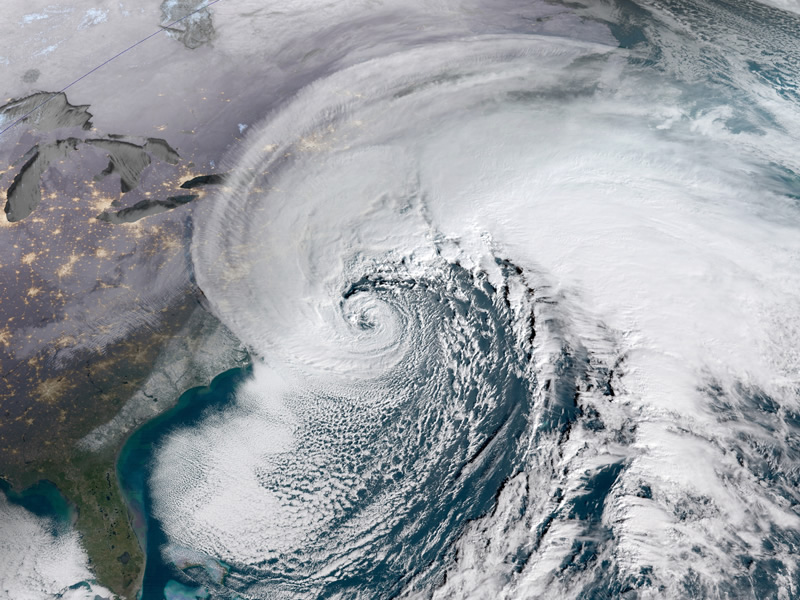
In recent years, Monmouth County has seen more nor’easters, microbursts, and post-tropical storms. What used to be rare events are now regular. Homeowners from Middletown to Holmdel and Colts Neck have noticed more limbs dropping, root plates shifting, and branches scraping against roofs after each storm.
“These are warning signs,” Hufnagel said. “Trees are living structures. They age, they decay, and they react to the environment. We can reinforce and preserve them, but ignoring them is not an option.”
He adds that insurance often doesn’t cover all damage from fallen trees if the homeowner ignored visible issues. “If a tree was leaning, decaying, or visibly dying, the adjuster will flag that as neglect,” he noted. “Preventive care isn’t just about safety — it protects your wallet.”
“It looked fine yesterday” — the four words arborists hear most

To the untrained eye, a full canopy and green leaves signal health. But interior decay, weak branch unions, and root loss can go unseen until a storm exposes them. Hufnagel says a routine inspection can identify those hidden hazards. “A certified arborist can look at a tree and tell you how it will behave under stress. That’s the difference between a quick pruning visit and a roof cave-in.”
Even minor corrections can make a big difference. Proper pruning redistributes weight, selective thinning reduces wind drag, and root aeration restores stability. “We don’t want to cut trees down,” Hufnagel emphasized. “We want to keep them standing safely.”
Lessons for Monmouth County homeowners
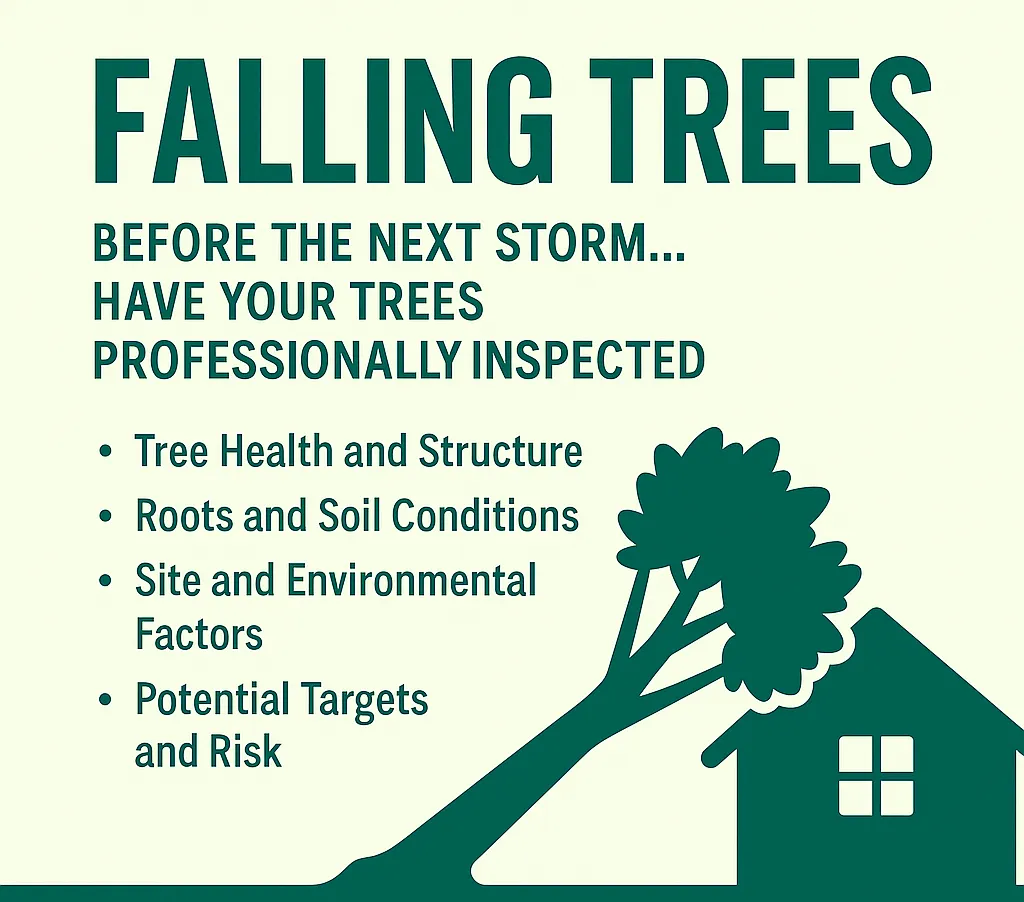
The Ridgefield storm didn’t strike here, but its message travels. Many local trees share the same age, species, and environmental stressors. In neighborhoods like Lincroft, Belford, and Atlantic Highlands, oaks and maples that have shaded homes for decades now tower over roofs built long after the trees were planted.
Homeowners should walk their property after heavy rain or wind and look for:
-
Cracked or lifting soil around tree bases
-
Dead limbs or hanging branches
-
Fungal growth or hollow spots on trunks
-
Leaning trees or branches near structures
If any of these signs appear, the safest move is to schedule a tree risk inspection before the next storm warning.
The wake-up call New Jersey can’t ignore
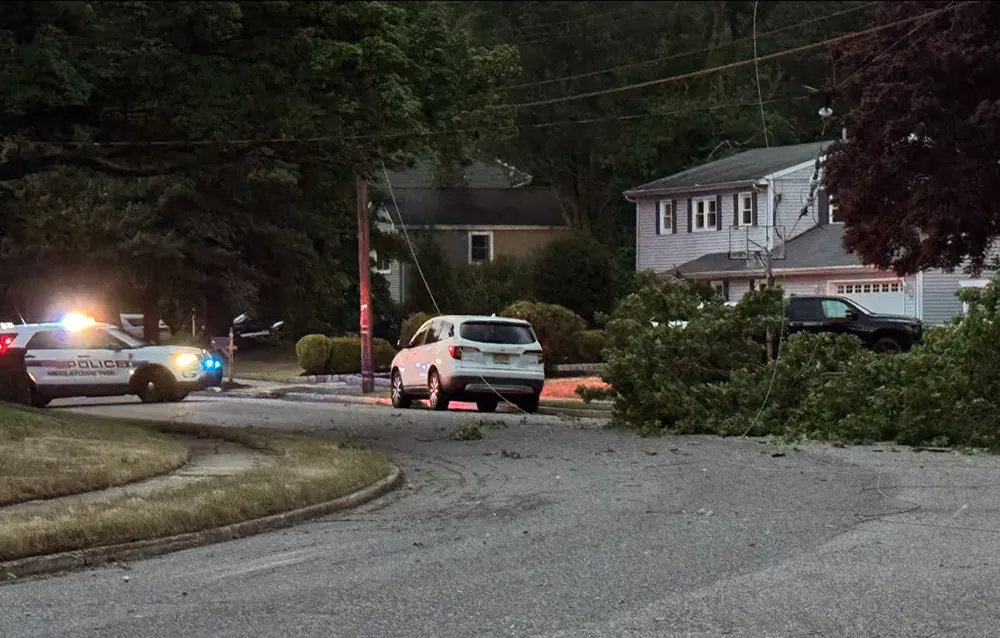
Standing outside his damaged home, Gael Okudzeto’s father was still shaking hours after the collapse. “The doctors said it’s a miracle. He’s not supposed to be alive,” he said, holding back tears. The Ridgefield family will need to relocate while repairs are made.
For the rest of New Jersey, their story is a reminder that even familiar weather can turn destructive when trees go unchecked. “A single inspection could prevent the next miracle story,” Hufnagel said. “We can’t stop the wind — but we can make sure your trees are ready for it.”
Keep Your Trees Healthy Year Round with Our Comprehensive Tree Services
Related Articles

Leonardo NJ Tree Trimming & Pruning Experts

Wall Township Tree Service: Safer, Healthier, Stronger Trees
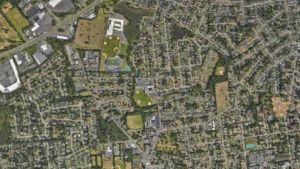
Precision Tree Trimming Experts Near West Long Branch, NJ
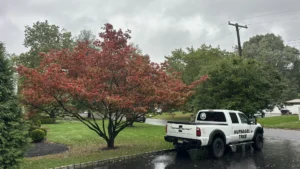
Tree Trimming Experts in Leonardo: True Arborists, Amazing Results
